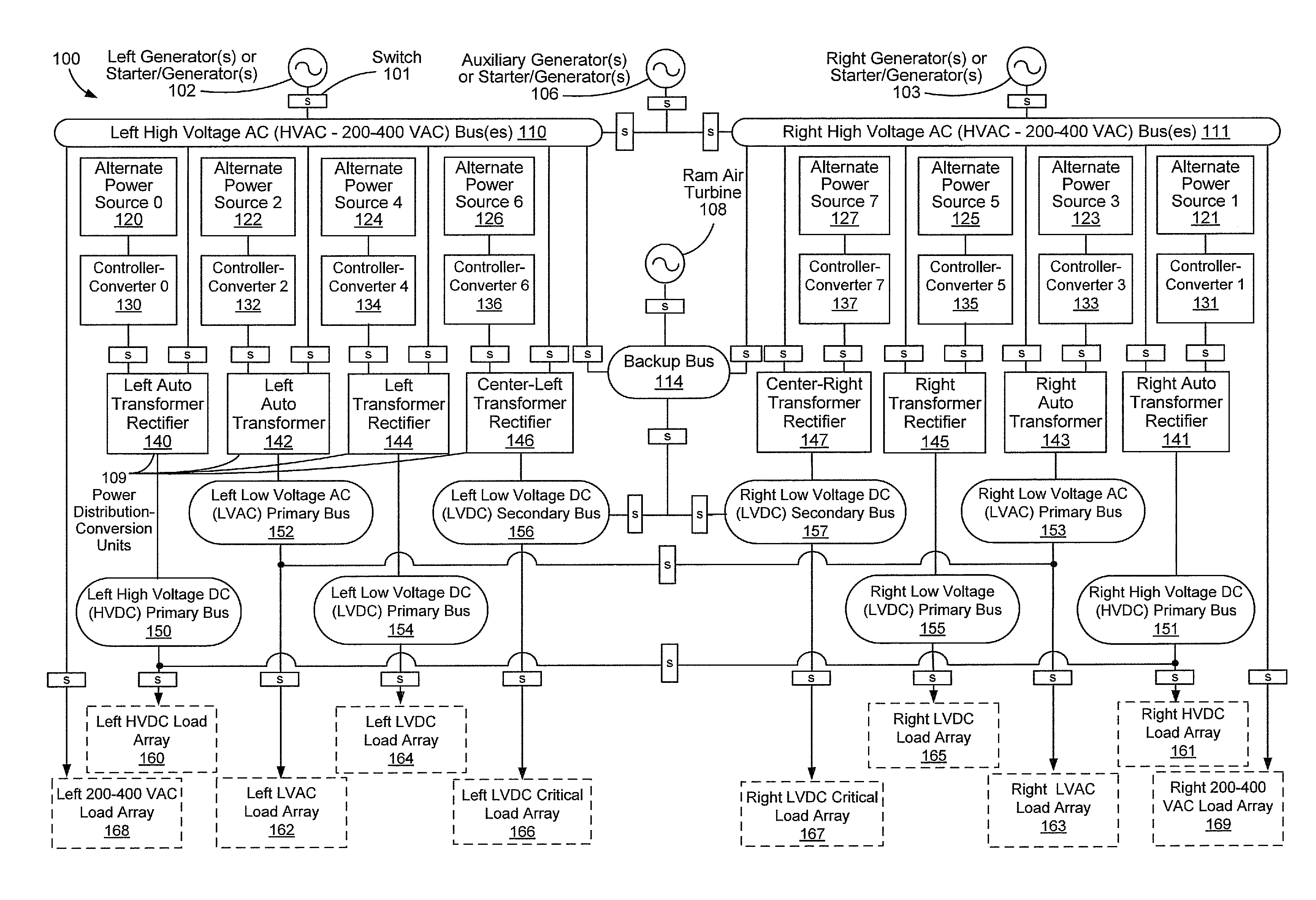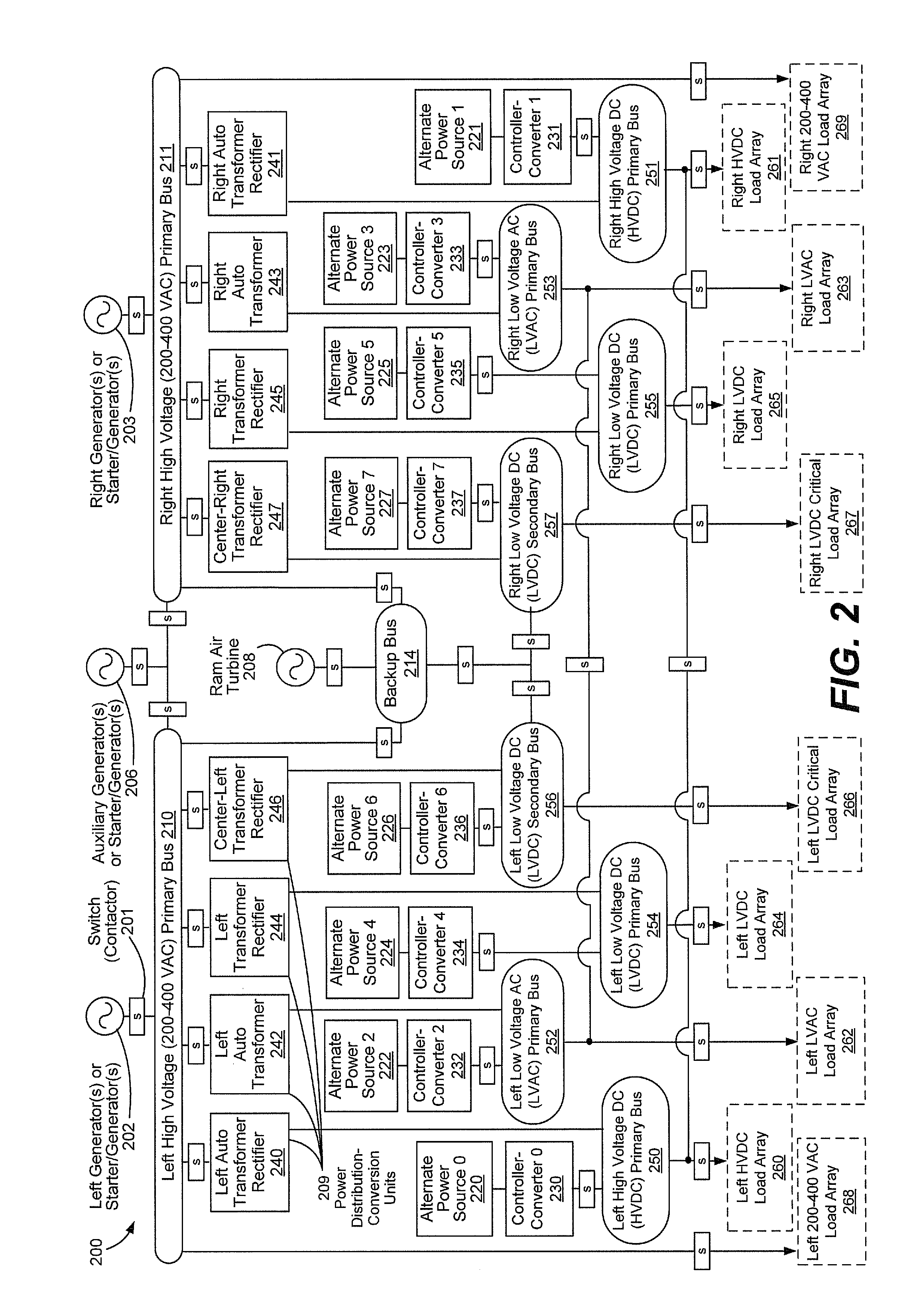Vehicle electrical power management and distribution
a technology for electrical power management and vehicles, applied in the field of vehicle power systems, can solve the problems of increased engine fuel consumption, increased manufacturing or operational costs, and reduced fuel consumption or emissions resulting from engine operation, so as to reduce the power demand of vehicle engines and reduce the effect of fuel consumption or emissions
- Summary
- Abstract
- Description
- Claims
- Application Information
AI Technical Summary
Benefits of technology
Problems solved by technology
Method used
Image
Examples
Embodiment Construction
[0019]Embodiments disclosed herein include systems and methods of providing power to vehicle subsystems and of controlling distribution of power to vehicle subsystems. In a particular embodiment, instead of relying on a first power (or generator power) provided by engine-driven generators or other generators, one or more vehicle subsystems receive alternate power from one or more engine-independent power sources. By using engine-independent power sources, or “alternate power sources” (e.g., a fuel cell system, a battery, a recuperative actuator, a supercapacitor, etc., that provide power independently of one or more engines), some power demand may be removed from the engine-drive generators. Removing some of the power demand from the engine-driven generators may make the vehicle more fuel efficient or may reduce vehicle operating emissions. Additionally, the alternate power sources may provide faster dynamic response to power demands, as well as improved power availability and relia...
PUM
 Login to View More
Login to View More Abstract
Description
Claims
Application Information
 Login to View More
Login to View More - R&D
- Intellectual Property
- Life Sciences
- Materials
- Tech Scout
- Unparalleled Data Quality
- Higher Quality Content
- 60% Fewer Hallucinations
Browse by: Latest US Patents, China's latest patents, Technical Efficacy Thesaurus, Application Domain, Technology Topic, Popular Technical Reports.
© 2025 PatSnap. All rights reserved.Legal|Privacy policy|Modern Slavery Act Transparency Statement|Sitemap|About US| Contact US: help@patsnap.com



